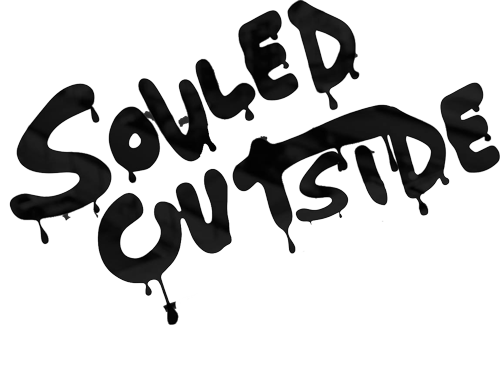“This used to be a boys school. The headmaster was murdered here. That’s the legend anyways.” – Lynda, The Portcullis Hotel, Stirling Scotland.
“Do you want to have a look?” The bar under Stirling Castle had been our home for just a few minutes before the staff noticed my camera. Except for two ladies tending the bar and an off duty cook in the back, we were the only people still lingering around Castle Hill late on a Sunday evening.
The bar was cozy, occupying two rooms of a former school built in the 1700’s for the town’s wealthy elite. Its heavy doors and stone archways fit the part of a school built in the shadow of one of the world’s most famous castles. It was from atop this hill that English invaders would have witnessed a Scottish army led by William Wallace and Andrew Moray obliterating the Crown’s best in 1297. It was from atop this hill that they would have seen Robert the Bruce deliver the final strokes for Scottish victory in their first war for Independence 17 years later at the Battle of Bannockburn.

The gates of Stirling Castle
In European history, few knolls can match the stories of the hill where Lynda and Cheryl will pour you a pint from at the Portcullis. The area has a brilliant, but often bloody history. And on a cold, rainy night in Stirling, Leni and I were absorbing one of its lesser known stories on our own.
“We don’t normally let people up there, but you might get some good pictures if we go,” quipped Lynda, a friendly, middle-aged Scot with dark hair and a thick rolling accent. “We just had a wedding up there, and all of the photos had strange things in them.”
With Leni opting to stay at the bar, Lynda and I headed up the stairs on our own. “This spot just here,” she exclaims, motioning to a corner of the stairwell. “A psychic was here recently and said it’s radiating really darrrrk energy.”
I snapped a few photos just in case, but no orbs, shadows, or spirits appear.

The Portcullis Hotel, Stirling.
Onward and upward, I’m led to a dining room where the cook casually swears he’s seen a ghostly ballerina twirling at night. Only visible from the corner of your eye, she seems forever lost in a dance that ended decades ago.
Lynda slides open a narrow wooden shutter. It’s a cover to an old window facing out towards the castle, over a moonlit graveyard. I snap the shutter; again, no result.
We continue climbing for five stories, past a handful of occupied hotel rooms until we reach a small door leading to the unfinished attic. Without electricity, it’s hard to get a feel for the space, but narrow stairs and long exposures offer up no further evidence of hauntings at The Portcullis.
Disappointed, but relieved, Lynda and I bounce down the fire escape and back into the bar. There would be no haunting tonight.
That was a welcome change.

3:00 a.m. — I snapped wide awake in a pitch black room. An arm’s length away, a glass door leading to a courtyard was locked shut. The castle itself held us in its grasp, as we tried to sleep inside of one of its four hundred year old walls.
We were still a half day’s drive from Stirling; and we wouldn’t meet Lynda and Cheryl until almost 24-hours later, but something had woken me up in the middle of the night. In total darkness, the Highland night offered no clue to who or what was stirring my mind.
Still, I knew something was there. “It’s my imagination,” I told myself, as a flipped the t.v. remote. A more primal instinct told me it wasn’t.
Foulis Castle is a grand Scottish estate built on the ruins of an even older fortress. Today, it looks more like a palace than a castle; but for a time it looked very much like the stone battle bastions you see in every cranny of Great Britain. That original castle was burned and ruined, and its ensuing redesign has been the source of family conflict and periodic abandonments for over 200 years.
Even today, it’s occupied full-time by just a family of four—not many for a building that used to have 20 bedrooms.
It’s the kind of place where you can feel the past echo. In parts of the castle, you can breathe the very dust of the past…especially in the lingering remnants of its original foundation. Those remnants, of course, were where I ventured as soon as we arrived. I couldn’t help it you see. An open door in the side of the courtyard was too good to pass up. But at 3:00 a.m., I was second-guessing my move to investigate.

The door was a portal to the past, some leftover vestige of a guard tower build around 1450. With a low-slung roof and a floor taken straight from the Old Testament, it was the kind of place that an archeology hound couldn’t resist. Unfortunately, it was exactly the kind of place where a medieval spirit might lie as well.
I knew when I stepped into the room that I wasn’t supposed to be there. No castle rules prevented me from going in. We basically had free reign of the grounds; but a heavy presence was telling me to go. Oddly, at the same time, another feeling was telling me to go in.
They both felt like the same presence waking me up at night. But when I went back into the small room the next morning just to be sure, the feeling was gone.
I don’t think I’ll ever know what those feelings were. Few records have survived from the castle’s past, and just like I’d see at The Portcullis a few hours down the road, photographs revealed nothing.
This blog isn’t about ghosts. But it is about your gut. A few years ago, my gut told me to travel. This week, it told me to keep rolling down that road—far away from ancient walls and their stories.










